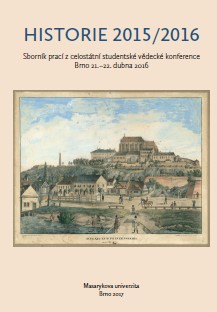SYMBOLICKÉ TOPOGRAFIE PRAHY V DLOUHÉM 19. STOLETÍ: KONTINUITA A ZMĚNA V PROCESU MODERNIZACE
THE SYMBOLIC TOPOGRAPHY OF PRAGUE IN THE 19TH CENTURY: CONTINUITY AND CHANGE IN THE PROCESS OF MODERNIZATION
Author(s): Vojtěch Pojar
Subject(s): Cultural history, Architecture, Local History / Microhistory, 19th Century
Published by: Masarykova univerzita nakladatelství
Keywords: 19th century; Prague; Topography; Prague’s most important sights;
Summary/Abstract: During the 19th century, Prague, the capital of Bohemia, became a major travel destination. A body of more than 160 extant travel guides bears witness to this development. Drawing on memory studies and modernization theory, this essay examines these travel guides to trace the changes of collective memory in the Central European urban setting at a time of dynamic change. This essay argues that the canon of Prague’s most important sights already existed in the early 19th century and its presence thus predated the emergence of the first modern travel guides. While the canon of Prague’s must-see sites remained surprisingly stable during the ‘long 19th century’, the collective memories attached to Prague’s spaces underwent a pronounced transformation. The ‘symbolic topography’ (M. Halbwachs) of Prague established on local Bohemian patriotism and associated most notably with the Vormärz Prague’s middle classes, disintegrated in the second half of the century. It eventually gave place to the conflicting collective memories of the Czech and German nationalist intelligentsia. Furthermore, the collective memories of various religious and professional groups also began to be articulated publicly and became accessible to travellers. A plurality of collective memories existing in the public sphere thus emerged as symbolic of modern open societies. All these memories, however, remained intrinsically linked to the same spaces of the historical city. The essay thus reveals the ambiguity of the relationship between diverse memories and spaces: while their content draws boundaries between individual groups, their form binds these communities together..
- Page Range: 216-236
- Page Count: 21
- Publication Year: 2017
- Language: Czech
- Content File-PDF

